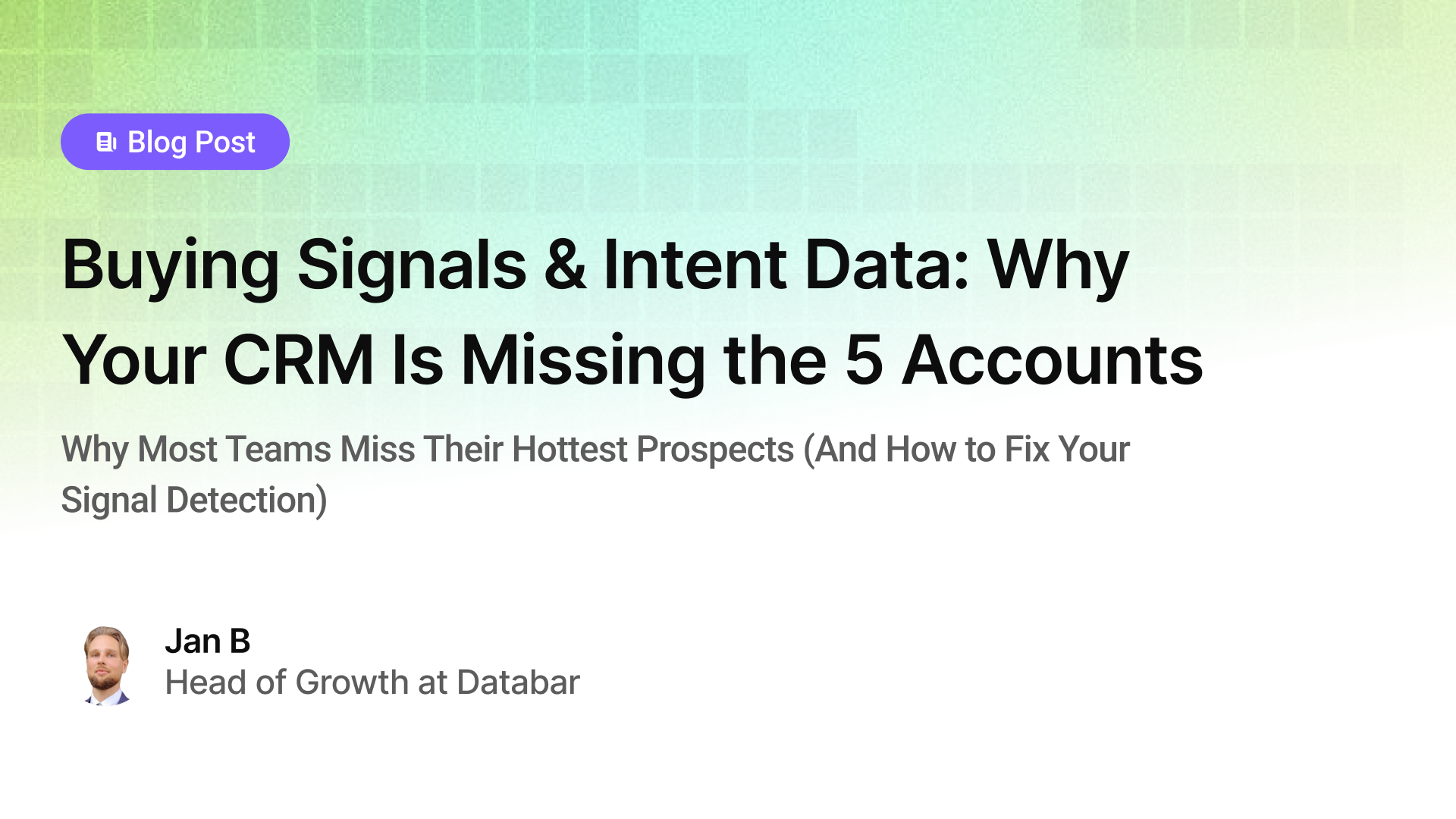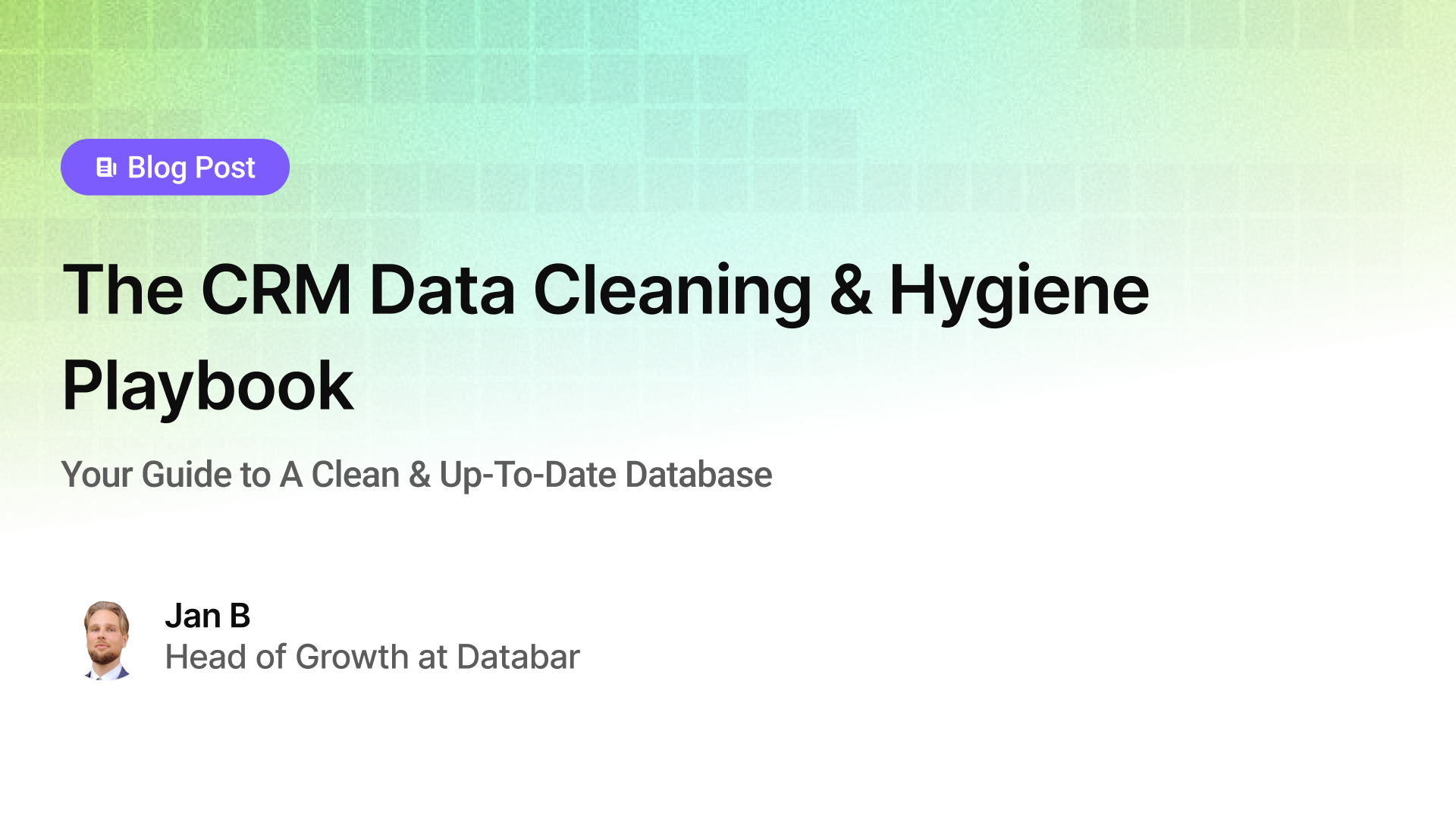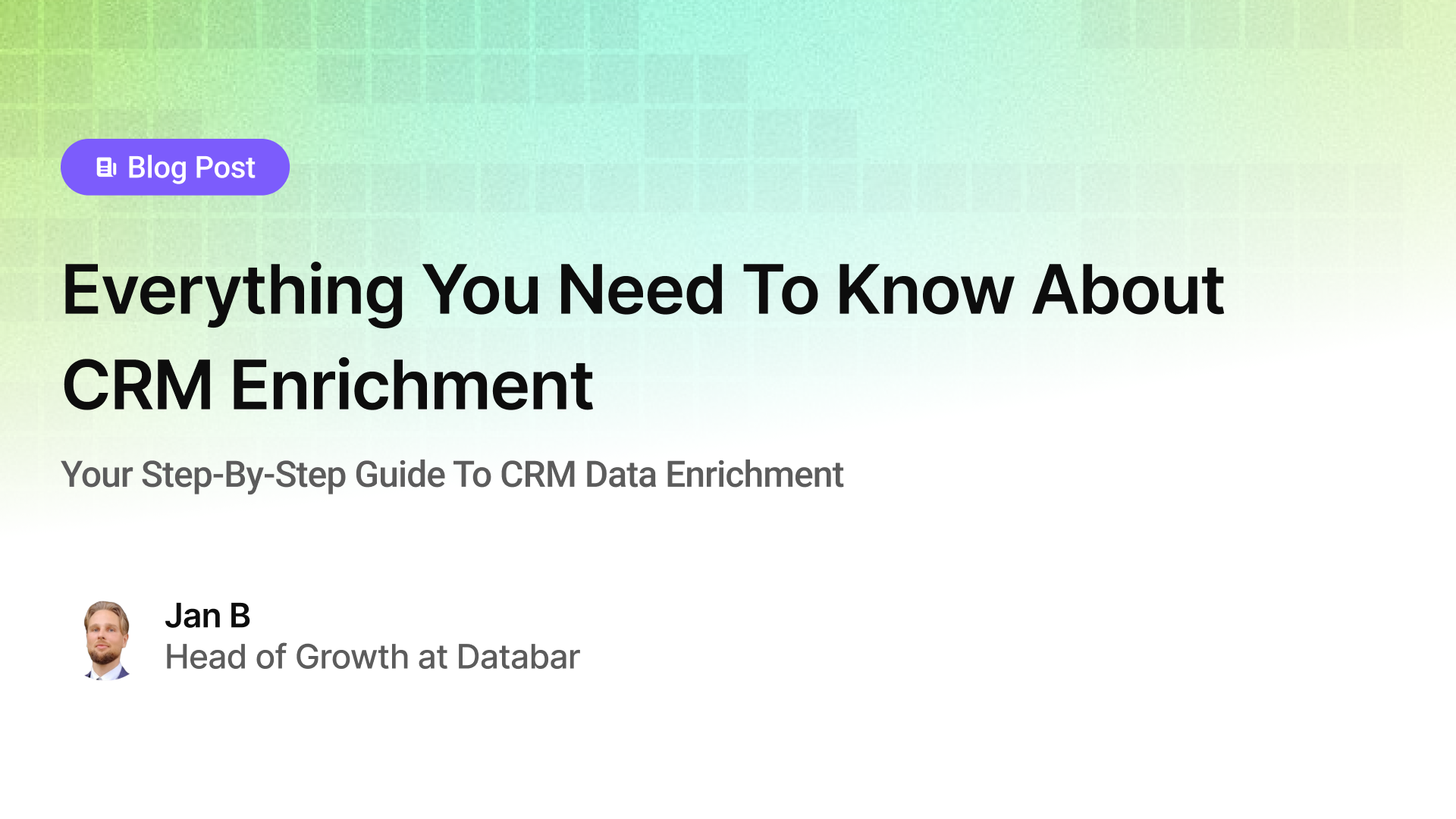5 High-Impact Outbound Triggers That Drive Meaningful Responses
Five Essential Outbound Triggers for Increased Engagement
Blogby JanApril 02, 2025

Effective outbound messaging depends heavily on timing and relevance. While many organizations focus exclusively on perfecting their message copy, the most successful teams recognize that when you reach out is often more important than what you say.
By identifying and acting on specific triggers that indicate potential need for your solution, you can dramatically improve response rates and conversion quality. This article explores five proven outbound triggers that create genuine opportunities for meaningful conversations.
1. Funding Events: The Capital Deployment Window
When companies raise significant funding, they enter a critical period where capital deployment decisions directly impact their growth trajectory. This creates an exceptional opportunity for solutions that help them scale efficiently.
Why It Works
Companies that secure funding are typically:
- Actively planning strategic investments in their infrastructure
- Under pressure to show growth metrics to justify their valuation
- Looking to optimize operations as they scale
- Often hiring rapidly and building new capabilities
Implementation Approach
Monitoring funding announcements is relatively straightforward, but the timing and approach of your outreach make all the difference:
Best Timing: 3-6 weeks after the funding announcement
- Immediate post-funding outreach often gets lost in the noise
- After 3-6 weeks, companies have formulated initial deployment plans but haven't yet committed to all solutions
Effective Messaging Framework:
- Reference the specific funding amount and round (demonstrates research)
- Connect to a typical challenge that emerges at their new funding stage
- Position your solution as an enabler of their growth objectives
- Include a specific example of how similar companies utilized your solution post-funding
2. Leadership Transitions: The New Vision Window
New executive hires—particularly at the C-level and VP level—create valuable opportunities for outbound engagement. These transitions often signal strategic pivots, new priorities, and a willingness to evaluate new solutions.
Why It Works
New leaders typically:
- Have a mandate to drive meaningful change
- Are establishing their strategic vision during their first 90 days
- Need to demonstrate early wins and momentum
- Are more open to new vendor relationships than established executives
- Haven't yet committed to long-term technology decisions
Implementation Approach
While many companies track CEO changes, the most effective trigger strategies monitor a broader range of leadership transitions:
Key Positions to Monitor:
- Chief Revenue Officer / VP of Sales
- Chief Marketing Officer / VP of Marketing
- Chief Technology Officer / VP of Engineering
- Chief Data Officer / VP of Analytics
- VP of Customer Success
Best Timing: 14-30 days after the new leader's start date
- The first two weeks are typically consumed with internal onboarding
- After two weeks, new leaders begin evaluating their technology and process needs
- After 60 days, they've often already made initial vendor decisions
Effective Messaging Framework:
- Acknowledge their new role (demonstrates awareness)
- Reference a specific challenge they're likely inheriting based on company situation
- Position your solution as an enabler of their new strategic vision
- Offer insights relevant to their specific function and level
Companies using leadership transition triggers reported 32% higher meeting conversion rates compared to standard outbound approaches.
3. Technology Stack Changes: The Integration Window
Changes in a company's technology stack signal evolving capabilities, priorities, and potential integration needs. By monitoring these shifts, you can identify moments when your solution becomes particularly relevant.
Why It Works
Companies implementing new technologies often:
- Need complementary solutions to maximize their investment value
- Face integration challenges between new and existing systems
- Require specialized expertise during implementation phases
- Are actively evaluating their broader technology ecosystem
Implementation Approach
Technology adoption signals require slightly more sophisticated monitoring but deliver exceptionally high relevance:
Detection Methods:
- Website technology scanners that identify changes in deployed solutions
- Job postings mentioning specific technologies or platforms
- Social media announcements about new technology partnerships
- Digital footprint analysis showing new technology implementations
Best Timing: During implementation phase or 30-60 days post-implementation
- During implementation: Position as an implementation accelerator
- Post-implementation: Position as an optimization or extension solution
Effective Messaging Framework:
- Reference the specific technology change detected
- Identify a common challenge or limitation associated with that technology
- Position your solution as an enhancer that addresses the limitation
- Include a specific integration benefit or efficiency gain
4. Growth Indicators: The Scaling Challenges Window
Rapid growth creates new operational challenges and exposes process inefficiencies. By identifying companies experiencing significant growth, you can position your solution as a critical enabler of sustainable scaling.
Why It Works
Companies in high-growth phases typically:
- Experience friction in processes that worked at smaller scales
- Need more sophisticated tools to maintain quality while growing
- Face increasing data complexity and management challenges
- Are actively seeking solutions that support their momentum
Implementation Approach
Growth signals can be detected through multiple indicators:
Key Growth Signals:
- Significant increase in job postings across multiple departments
- Geographic expansion into new markets or regions
- Rapid website traffic growth (detected through third-party tools)
- New product launches or significant feature expansions
- Substantial increases in digital advertising spend
Best Timing: When multiple growth signals appear simultaneously
- Single signals may indicate normal business fluctuations
- Multiple concurrent signals typically indicate a true growth phase
Effective Messaging Framework:
- Reference the specific growth patterns observed
- Identify a common scaling challenge related to those patterns
- Position your solution as an enabler of efficient, sustainable growth
- Include a specific example of how similar companies maintained quality during rapid scaling
5. Competitive Landscape Shifts: The Strategic Response Window
Changes in a company's competitive landscape—whether through competitor acquisitions, new market entrants, or disrupted markets—create strategic pressure that often leads to new technology investments.
Why It Works
Companies facing competitive shifts typically:
- Need to differentiate themselves in changing market conditions
- Must improve operational efficiency to maintain competitive pricing
- Seek technology advantages to counter competitor moves
- Are more open to innovative approaches during market disruption
Implementation Approach
Competitive landscape monitoring requires broader market awareness but creates highly effective engagement opportunities:
Key Competitive Signals:
- Competitor acquisitions or mergers
- New market entrants with significant funding
- Competitor adoption of transformative technologies
- Industry regulatory changes affecting competitive dynamics
- Pricing disruption in the market
Best Timing: 30-45 days after a significant competitive event
- Initial reaction period (first 30 days) is often internally focused
- After 30 days, companies begin formulating strategic responses
- Beyond 60 days, initial response strategies are typically locked in
Effective Messaging Framework:
- Reference the specific competitive shift (demonstrates market awareness)
- Identify how this shift likely impacts their strategic position
- Position your solution as a differentiator or competitive advantage
- Include a specific example of how similar companies successfully navigated similar competitive challenges
Implementing Trigger-Based Outbound at Scale
While these triggers demonstrate exceptional effectiveness, implementing them at scale requires sophisticated data infrastructure and workflow automation. This is where platforms like Databar provide crucial capabilities:
Multi-Source Trigger Detection
Effective trigger identification requires monitoring multiple data sources simultaneously.
- Industry news and press releases
- Job boards and hiring patterns
- Company websites and digital footprints
- Social media and executive announcements
- Technology implementation signals
Databar consolidates 90+ data sources including diverse intent signals into one platform, enabling automatic detection of relevant triggers as they occur.
Automated Workflow Activation
When triggers are detected, they must immediately activate appropriate outreach workflows for the best results:
- The system identifies a relevant trigger for a target account
- The appropriate messaging template is selected based on the trigger
- Account-specific data is incorporated for personalization
- An exporter pushes the data directly into you outreach sequence in your outbound tool
This automated approach allows sales teams to maintain trigger-based outreach without manual monitoring or activation requirements.
Conclusion
The most effective outbound strategies recognize that context and timing are often more important than message crafting alone. By implementing these five high-impact triggers, you can dramatically improve the relevance and effectiveness of your outbound efforts.
Organizations that adopt sophisticated trigger-based approaches consistently outperform traditional outbound methods, achieving response rates 2-3x higher than standard sequences while simultaneously improving conversion quality.
By combining trigger detection, workflow automation, and continuous optimization, you can improve outbound from an interruption-based volume game to a highly targeted, contextually relevant engagement strategy that delivers consistent results.
FAQ
How many triggers should we monitor simultaneously?
Start with 1-2 triggers most relevant to your solution and target market. Once you've established effective workflows for these initial triggers, you can gradually expand to additional signal types.
Can these triggers work for any industry?
Yes, though the relative effectiveness varies by sector. Technology companies typically respond strongly to competitive and funding triggers, while established enterprises often show higher engagement with leadership transition and growth phase triggers.
How does trigger-based outbound compare to intent-based marketing?
While intent data focuses on detecting research activity that signals interest, trigger-based outbound identifies organizational changes that create need. These approaches complement each other - intent signals show who's actively looking, while triggers identify who should be looking based on their business situation.
Related articles

Buying Signals & Intent Data: Why Your CRM Is Missing the 5 Accounts
Why Most Teams Miss Their Hottest Prospects (And How to Fix Your Signal Detection)
by Jan, October 06, 2025

Lead Scoring & Account Segmentation: Why Most CRMs Get This Backward (And How to Fix It)
How to build a system that tells your team who to call, when, and why
by Jan, October 06, 2025

The CRM Data Cleaning & Hygiene Playbook
Your Guide to A Clean & Up-To-Date Database
by Jan, October 04, 2025

Everything You Need To Know About CRM Enrichment
Your Step-By-Step Guide To CRM Data Enrichment
by Jan, October 03, 2025